Misc Visuals
A Visual Compendium of Life Advice from 50 Children’s Characters
You don’t have to be a kid to appreciate the lessons and moral anecdotes from films, television shows, and books geared towards children. These stories often dispense advice that is valuable for people of all ages.
Which children’s characters have the most inspiring life advice?
Click below to zoom
The design team at AAA State of Play created a unique visualization that highlights 50 of the best life lessons from beloved children’s characters. The graphic utilizes a unique style to depict the characters. The vector-style geometric faces depict a clean look, allowing for the positive messages of the quotes to really stand out.
Some of the most compelling quotes included in the graphic:
- “Our fate lies within us, you only have to be brave enough to see it.” – Merida from Brave
- “The flower that blooms in adversity is the most rare and beautiful of all.” – Emperor of China from Mulan
- Your identity is your most valuable possession. Protect it.” – Elastigirl from The Incredibles
- “When bad things happen, I know you want to believe they are a joke, but sometimes life is scary and dark. That is why we must find the light.” – BMO from Adventure Time
- “Fairy tales can come true. You gotta make them happen, it all depends on you.” – Tiana from The Princess and the Frog
- A little consideration, a little thought for others, makes all the difference.” – Eeyore from Winnie-the-Pooh
- “In every job that must be done there is an element of fun.” – Mary Poppins
Which quote resonates the most with you?
Misc Visuals
How to Avoid Scams in 2025
Americans will collectively lose over $2 billion to scams this year. As technology advances, scammers and fraudsters use more sophisticated tactics that are harder for victims to identify and avoid. The team at Ooma created a list of up-to-date tips and methods to prevent fraud and scams via email, text, phone, and Internet messages. With proper prevention and education, people can avoid falling into a scammer’s trap. One in three people who have reported fraud lost money as a result, so the team’s advice can help people avoid getting too far into a scammer’s trap if they don’t prevent them entirely.
Click below to zoom.
Phone calls and text messages can be very tricky. Many people have caught on to the practice of avoiding calls from unknown area codes. Lately, scammers have taken advantage of neighborhood spoofing. They use a familiar area code so the people they call are more likely to think it’s someone they know and answer.
Ooma offers these tips for avoiding and navigating scams via the phone:
- Despite number spoofing, you should still avoid answering unknown calls, as answering lets the scammer know your number is active.
- Never share sensitive information like your full Social Security number over the phone. A legitimate company will never request this.
- If the caller starts pressuring you to do something like send money or share information urgently, you can assume they’re a scammer and don’t feel guilty about hanging up the phone.
- Don’t click on links sent through text. It can lead to malware.
- Never act on requests to send money through unusual means like gift cards or cryptocurrency.
- Use spam filters and call-blockers to limit the messages you receive.
- Report spam numbers to your carrier.
Email scams can be just as malicious and difficult to detect, even after getting past malware protection and spam blockers. Here are some of the team’s tips for avoiding email scams:
- Go directly to a website’s domain rather than click on links in unsolicited emails.
- Check the sender’s full address and look out for signs that the address was spoofed.
- Hover your mouse over links to make sure they’re legitimate. Malware domains often include spammy nonsense in their names or names that don’t match the alleged sender.
- Use two-factor authentication on email and logins.
- Make sure your software’s malware protection is up to date.
- If you aren’t sure how to handle a phishing scheme once you’re ensnared, practice with emulators that can help you learn what to say and do.
- Be aware that scammers sound more legitimate these days thanks to the power of AI.
- Have a plan in place for what to do in the event of falling victim to a scam. You should change your passwords and contact your bank immediately.
Ooma’s steps can’t completely eliminate the possibility of fraud, but they are strong best practices to prevent encountering scammers and to deal with them if they contact you. If you follow these steps carefully, you’re very unlikely to lose money to a scam.
Misc Visuals
Study Examines American Slang Trends and What Words We Want to Revive
Words that were once at the cutting edge of language and culture are quickly dumped into a bin of corny, outdated phrases that might get a chuckle if you use them in earnest. Slang is meant to reflect the times, but it’s also intended to express a feeling we don’t have other words for. Preply examined the ins and outs of slang culture in their new study that asked Americans their favorite slang terms, their slang use habits, and which words they would love to see make a comeback.
Click below to zoom.
Words that were once at the cutting edge of language and culture are quickly dumped into a bin of corny, outdated phrases that might get a chuckle if you use them in earnest. Slang is meant to reflect the times, but it’s also intended to express a feeling we don’t have other words for. Preply examined the ins and outs of slang culture in their new study that asked Americans their favorite slang terms, their slang use habits, and which words they would love to see make a comeback.
Words are ever-evolving, and sometimes retro slang makes a big comeback. For example, “cool” is a slang term we’ve used for decades, but there are also countless examples of slang that offer us another way to say “cool” without seeming cliché. It might surprise you to learn which phrases were the most popular choices to revive.
Here’s the list of top terms:
- Baloney
- Take a chill pill
- Bogus
- Cruisin’ for a bruisin’
- Groovy
- Spiffy
- Heebie-jeebies
- Gnarly
- Knuckle sandwich
- Rad
- Wassup?
- Chillax
- The bee’s knees
- Da bomb
- Mellow out
- Keep on truckin’
- Booyah!
- As if!
- Made in the shade
- Snafu
Over 50% of respondents chose those top three terms. Each term comes from a different decade, and “bogus” and “baloney” mean more or less the same thing. But bogus and baloney give a cheeky flair and a sense of outrage to the alternative, which is to say, “that’s absolute nonsense.” Slang usually sounds informal and adds another layer of emotion to what the speaker tries to express.
The respondents said that ‘90s slang was their favorite of all time, except for baby boomers, who all prefer slang from the 1960s. Interestingly, men preferred ‘70s slang and women preferred ‘90s slang. Gen X is the most nostalgic about slang from their childhood, which might account for the popularity of ‘90s and ‘80s slang.
Gen Z is most likely to use old slang as a joke or ironically. They’re also the quickest to flinch over outdated slang, and their slang changes quickly as it’s based on social media trends and memes that feel passe within a few weeks. Gen Z is also the most unfamiliar with older slang, with 80% having had to Google the meaning of a slang word from the past.
Slang captures who we are in cultural moments, whether we’re talking about the pre- or post-Internet age. Slang unites us with phrases that allow us to share humor, rebellion, or a sense of identity. The study shows fascinating patterns of language, too. We can say something is rad, lit, or fire, and they all generally mean the same thing (“cool”), but the people using those words are probably from different generations. People who feel nostalgia for slang are reminded of what they saw as a simpler past, or they yearn for the pop culture that spawned these phrases. Preply’s work is a true celebration of language and culture!
Words are ever-evolving, and sometimes retro slang makes a big comeback. For example, “cool” is a slang term we’ve used for decades, but there are also countless examples of slang that offer us another way to say “cool” without seeming cliché. It might surprise you to learn which phrases were the most popular choices to revive.
Here’s the list of top terms:
- Baloney
- Take a chill pill
- Bogus
- Cruisin’ for a bruisin’
- Groovy
- Spiffy
- Heebie-jeebies
- Gnarly
- Knuckle sandwich
- Rad
- Wassup?
- Chillax
- The bee’s knees
- Da bomb
- Mellow out
- Keep on truckin’
- Booyah!
- As if!
- Made in the shade
- Snafu
Over 50% of respondents chose those top three terms. Each term comes from a different decade, and “bogus” and “baloney” mean more or less the same thing. But bogus and baloney give a cheeky flair and a sense of outrage to the alternative, which is to say, “that’s absolute nonsense.” Slang usually sounds informal and adds another layer of emotion to what the speaker tries to express.
The respondents said that ‘90s slang was their favorite of all time, except for baby boomers, who all prefer slang from the 1960s. Interestingly, men preferred ‘70s slang and women preferred ‘90s slang. Gen X is the most nostalgic about slang from their childhood, which might account for the popularity of ‘90s and ‘80s slang.
Gen Z is most likely to use old slang as a joke or ironically. They’re also the quickest to flinch over outdated slang, and their slang changes quickly as it’s based on social media trends and memes that feel passe within a few weeks. Gen Z is also the most unfamiliar with older slang, with 80% having had to Google the meaning of a slang word from the past.
Slang captures who we are in cultural moments, whether we’re talking about the pre- or post-Internet age. Slang unites us with phrases that allow us to share humor, rebellion, or a sense of identity. The study shows fascinating patterns of language, too. We can say something is rad, lit, or fire, and they all generally mean the same thing (“cool”), but the people using those words are probably from different generations. People who feel nostalgia for slang are reminded of what they saw as a simpler past, or they yearn for the pop culture that spawned these phrases. Preply’s work is a true celebration of language and culture!
Misc Visuals
Exploring Every Movie With an El Camino Appearance
Film buffs and motorheads will be fascinated with this new chart from Speedway Motors that lists every single film appearance of Chevrolet’s El Camino. Since 1959, El Caminos have been a popular car choice for movie sets. They combine functionality with the style of a muscle car, giving it a cool, rugged, yet humble All-American look that makes it surprisingly versatile and suitable for many different film genres. We can see its versatility in this extensive list of hundreds of films that featured an El Camino. The team sorted appearances by year.
Click below to zoom.
The most commonly featured model is the 1978 El Camino, which has 96 film appearances, including Reservoir Dogs, Boyz n the Hood, and There’s Something About Mary. This was one of the bestselling models, featuring a newly smoothed-out chassis in a ‘70s style. The 1982 model is also very popular, with 84 film appearances across a range of genres. Some of the best-known film appearances include Boogie Nights, Straight Outta Compton, and Anchorman, which really demonstrate this model’s versatility. Another popular model is the 1973 El Camino, which features a boxier, late-1970s style appearance. This model is featured in 58 films, including Gremlins and Wall Street.
Models emphasizing a muscle car design are often chosen for car chase scenes. The 1968 El Camino boasts strong lines and a vintage, muscle car-inspired look. It is featured in 53 films, including chases in Steven Spielberg’s Duel and the classic movie Bullitt.
The El Camino shot right to the stars upon release. The original 1959 model has 24 film credits. The 1981 El Camino had a titular role in the Breaking Bad movie. Scrolling through the list, you’ll see that the El Camino is at home in spine-tingling thrillers, nostalgic dramas, action-packed, rough and ready flicks, and indie darlings.
This is the total number of films each El Camino model appears in:
• 1978 – 96 movies
• 1982 – 84 movies
• 1973 – 58 movies
• 1970 – 53 movies
• 1968 – 53 movies
• 1976 – 44 movies
• 1964 – 42 movies
• 1969 – 40 movies
• 1971 – 35 movies
• 1965 – 31 movies
• 1966 – 29 movies
• 1972 – 25 movies
• 1974 – 25 movies
• 1959 – 24 movies
• 1960 – 21 movies
• 1979 – 19 movies
• 1981 – 15 movies
• 1975 – 12 movies
• 1977 – 10 movies
• 1980 – 4 movies
• 1984 – 3 movies
• 1983 – 2 movies
• 1985 – 2 movies
• 1986 – 2 movies
• 1987 – 2 movies
• Unknown year – 2 movies
These lists are fascinating for film buffs who can analyze what appealed to directors and cinematographers for each model of El Camino. Intentional prop choices, like cars, really bring a film to life, and it seems the El Camino has the magic directors are after.
-
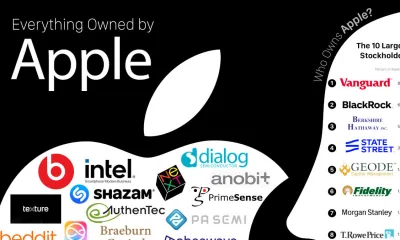
 Business Visualizations1 year ago
Business Visualizations1 year agoEverything Owned by Apple
-
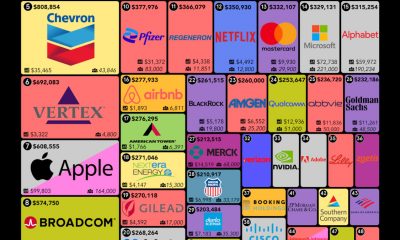
 Business Visualizations1 year ago
Business Visualizations1 year agoAmerica’s Most Valuable Companies Ranked by Profit per Employee
-
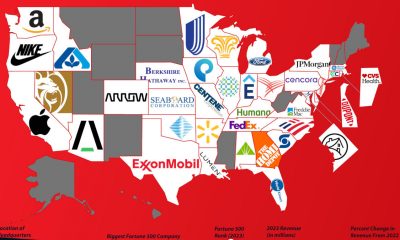
 Business Visualizations10 months ago
Business Visualizations10 months agoThe Biggest Fortune 500 Company in Every State
-
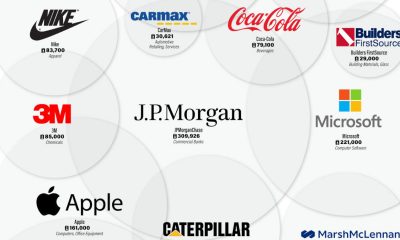
 Business Visualizations7 months ago
Business Visualizations7 months agoThe Biggest Employers by Industry
-
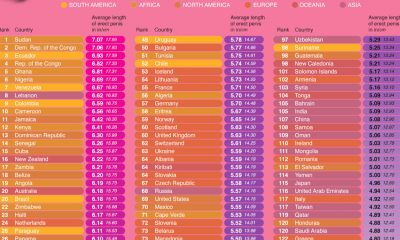
 Maps2 years ago
Maps2 years agoPenis Lengths Around the World
-
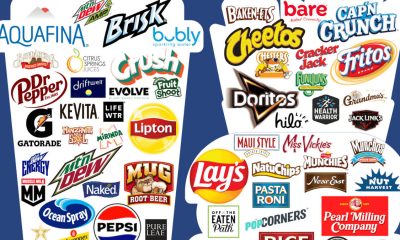
 Business Visualizations2 years ago
Business Visualizations2 years agoAll The Brands Owned By PepsiCo
-
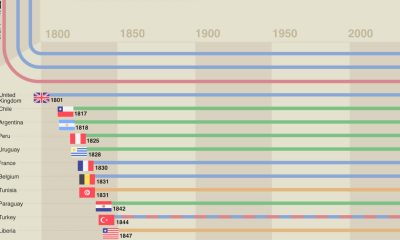
 Timelines2 years ago
Timelines2 years agoA History of the Oldest Flags in the World
-
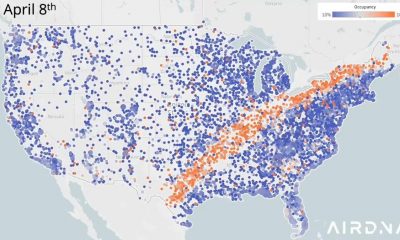
 Business Visualizations2 years ago
Business Visualizations2 years agoNew Animated Map Shows Airbnb’s Fully Booked Cities Along the 2024 Eclipse Path of Totality




